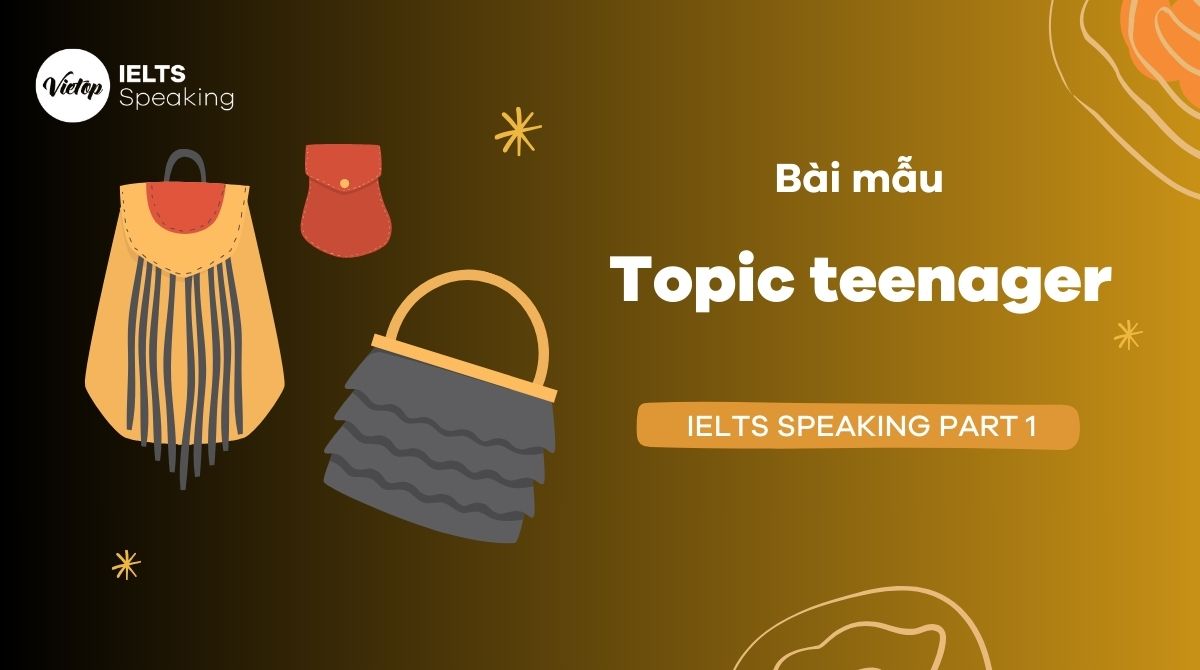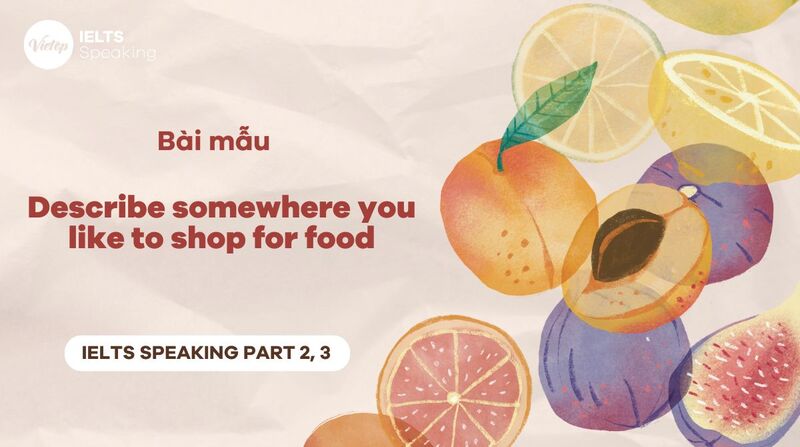Vietop gửi đến bài mẫu topic Farming trong IELTS Speaking, nếu bạn đang không tự tin về chủ đề này thì hãy lưu lại để luyện thi IELTS thật tốt nhé!
1. Giải bài mẫu topic Farming – IELTS Speaking part 1
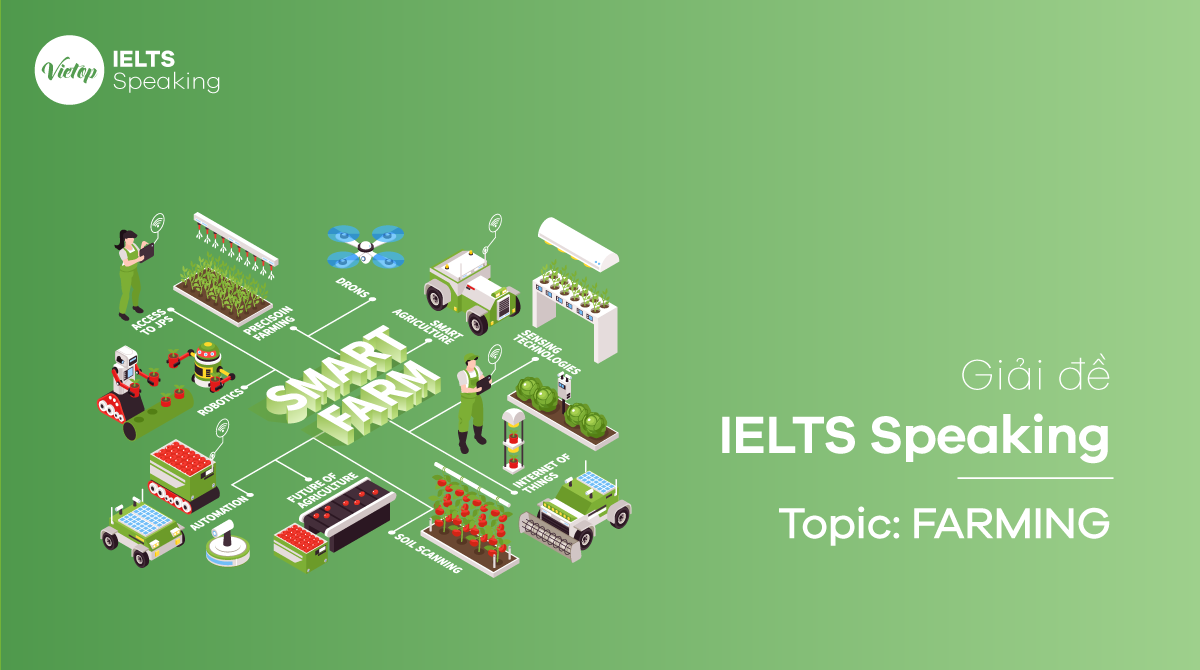
1.1. Have you visited a farm?
Several times before, I guess. Vietnam boasts massive rice fields, which are mostly found in the primary agricultural areas such as the Red River delta, the Mekong River delta. Though I live in the city, I frequently pay visits to my parents’ hometown where people grow major food crops like rice, sweet corn and potatoes.
- Boast (v): nổi tiếng về điều gì
- Red River delta: đồng bằng sông Hồng
- Mekong River delta (n): đồng bằng sông Cửu Long
1.2. What kind of farm do you like?
I’m in love with flower fields where the orchids and roses are carefully taken care of. The fragrance there is often pleasant and refreshing, unlike some poultry farms, whose unbearable smell often makes me feel sick.
- Fragrance (n): mùi hương
- Poultry farm (n): nông trại gia cầm
- Unbearable (adj): không thể chịu được
Xem thêm: Khóa học IELTS 1 kèm 1 – Chỉ 1 thầy và 1 trò, cam kết đầu ra
1.3. Do you think farming is important?
Absolutely. I don’t know about other countries but agriculture is the main source of raw materials for the processing industries and a major contributor to exports. The export of seafood as shrimp, squid or crab, in addition, has also become a major source of foreign exchange. Though it is said that agriculture is fading as the most important economic sector in Vietnam, I believe it is indispensable in terms of cultural values.
- Major contributor (n): sản phẩm đóng góp chủ yếu
- Export (v/n): xuất khẩu
- Indispensable (adj): không thể thiếu
1.4. Did you do farm work when you were young?
Being born and raised in the city, I have to admit that I never had the chance to be involved in farm work. Agriculture is highly labor-intensive in Vietnam, and much plowing is still done manually. I guess my parents could bear this burdensome task when they were young, but I don’t think I can ever pull it off.
- Be born and raised: được sinh ra và lớn lên
- Labor-intensive (adj): nặng nhọc
- Plow/plough (v): cày (ruộng)
- Manually (adv): một cách thủ công
- Burdensome (adj): khó khăn, nặng nhọc
- Pull s.th off: thành công, làm được cái gì
Audio
2. IELTS Speaking part 2: Describe an important plant in your country
You should say:
- What it is
- What it looks like
- Where and how it is grown/Where it is found
And explain why it is important
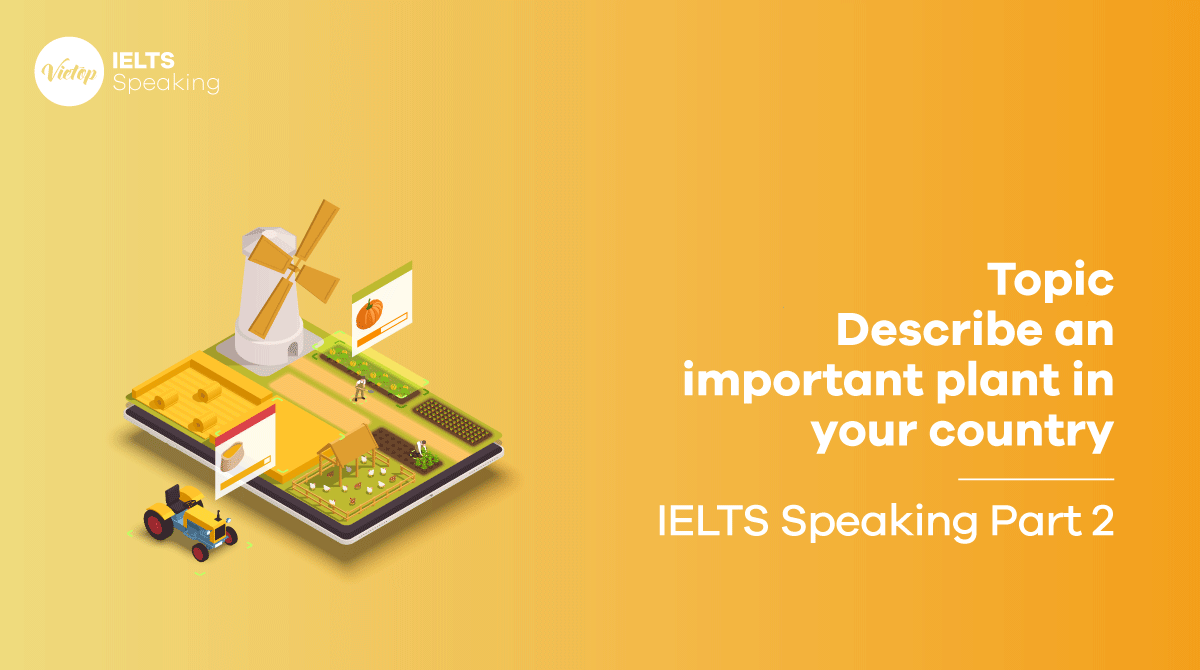
Sample
The plant that I’m going to share with you today is rice – an unofficial symbol of Vietnam.
Well, if you are not familiarized with this kind of plant, rice is an edible cereal grain and the grass plant by which it is produced. As a part of our diet, it is considered a source of carbohydrates, making up for the majority of the calorie intake of Vietnamese people.
The rice plant is an annual grass and grows to about 1.2 meters in height. The leaves are long, flattened and are borne on the stems. The flower cluster is then made up of spikelets bearing flowers that produce the grains. Varieties differ greatly in the length, shape, and weight of the panicle. After being processed in factories, the pale yellow grains can become straight-up white as they reach consumers.
In Vietnam, rice has been grown as early as the Stone Age, which initiated the wet rice civilization that lasted until today. It is now cultivated mostly in agricultural areas such as the Red River delta, the Mekong River delta, and the southern terrace region.
As an undisputed champion, rice is also used for worship in many Vietnamese sacred temples. The grain is seen as a “gift from God”, as there was an old legend of a young prince who got to be king by making the glutinous cake (“banh chung”) using the precious ingredient.
Rice may be much more than just a staple for Vietnamese. It is not an exaggeration to say that rice is the key component to Vietnamese traditional culture and economy. It is not just because Vietnamese people cannot go a day without rice, but it is also because rice feeds the whole population, and it contains a hidden beauty that can adorn the already elegant Vietnamese culture.
Vocab
- Familiarized with s.th: quen với điều gì
- Edible (adj): có thể ăn được
- Cereal grain (n): hạt ngũ cốc
- Stem (n): thân cây
- Spikelet (n): bông con (trước khi ra trái)
- Panicle (n): cụm hoa
- Pale yellow (adj): vàng nhạt
- Straight-up white (adj): trắng tinh
- Initiate (v): khơi nguồn, bắt đầu
- Wet rice civilization (n): nền văn minh lúa nước
- Undisputed champion (n): một người/ điều được nhiều người công nhận
- Worship (v/n): thờ cúng
- Sacred (adj): linh thiêng
- Staple (n): món chính
- Not an exaggeration to say that: thật không quá khi nói rằng
- Adorn (v): tô điểm, trang trí
Audio
Xem thêm: Khóa học IELTS 1 kèm 1 – Chương trình đào tạo chất lượng, cam kết đầu ra
3. IELTS Speaking part 3 topic Growing plants
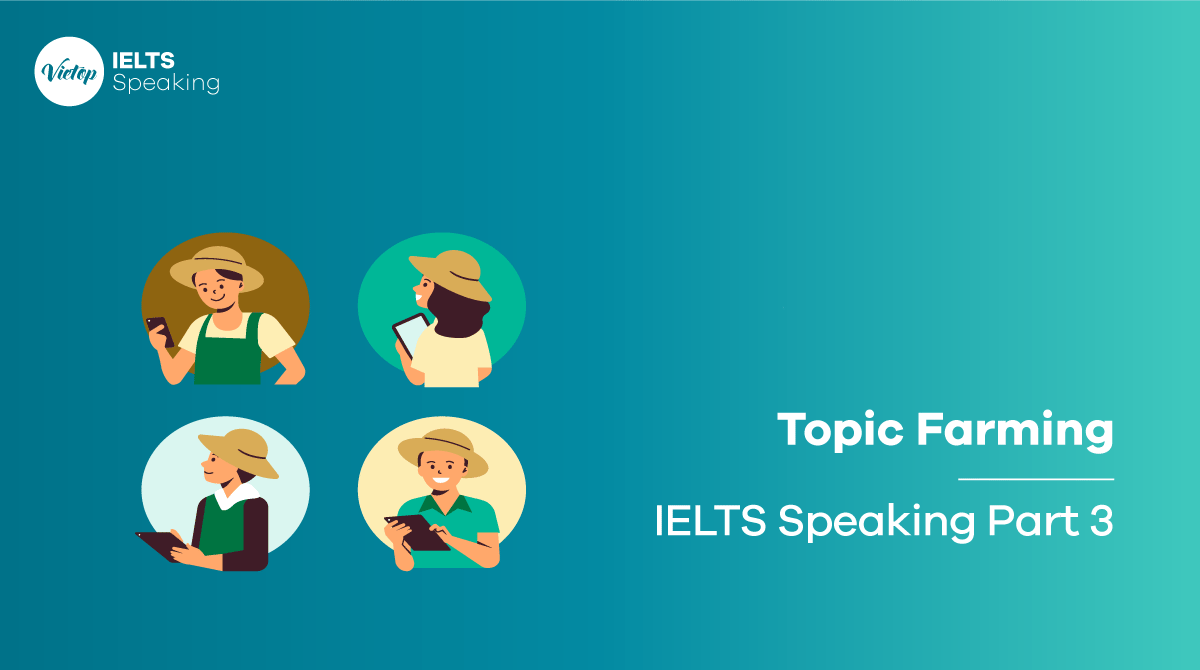
3.1. What plants are important to the economy in your country?
White rice is the most important crop, I suppose. Vietnam is the third-largest export market of agricultural products, and rice in particular, with a turnover of about USD 5.5 billion/year. Besides, there are many plantations of banana, coconut, and citrus trees, most of them found in the Mekong delta and the southern terrace regions. Coffee and tea, which are also among the signature products of Vietnam, are grown in the central highlands.
- Citrus (adj): thuộc họ cam, chanh
- Signature product (n): sản phẩm nổi bật nhất
- Central highland (n): vùng cao nguyên
3.2. Is it common for people to have gardens where you live?
Well, if you’re referring to an arboretum where you can set up a display for a study of trees, then it is not possible in the city, which is basically a concrete jungle. In the city, even public parks are few and far between, and people can barely find an open space to go for a jog.
However, many city dwellers are planting vegetables, raising chickens, and even fish in small yards in creative urban gardens amid the yards of multi-storey houses, balconies, or high-rise living quarters, as a response to food scarcity during the pandemic.
- Arboretum (n): vườn thực vật (lớn)
- Concrete jungle: khu vực hiện đại, nhiều nhà cao tầng (chỉ thành phố)
- Few and far between: hiếm gặp, xa nhau
- Multi-storey house (n): nhà nhiều tầng
- Food scarcity (n): sự thiếu lương thực
- Pandemic (n): đại dịch
3.3. How can people be encouraged to grow their own food?
Hmm…This is an interesting question. In my opinion, encouraging gardening in the community can be an uphill battle, as city dwellers are not familiar with farm work. I guess this has to start with early education to children, where we give them the opportunity to learn about where their food comes from and how to grow food with their own two hands.
Another idea that springs to my mind is that people can do a harvest swap within the neighborhood, where people get together and bring backyard produce to trade with one another. This is a great way to provide local food, connect with neighbors, help the environment, and stay healthy.
- Uphill battle: ý nói những việc gian nan, khó khăn
- Spring to one’s mind: chợt nảy ra trong đầu
- Harvest swap (n): sự trao đổi lương thực
Audio
Trên đây là bài mẫu IELTS Speaking về topic Farming mà Vietop muốn gửi đến bạn, hy vọng qua những chia sẻ trên sẽ giúp bạn được trong quá trình học IELTS. Nếu bạn có thắc mắc gì về bài viết, hãy để lại bình luận bên dưới để được giải đáp nhé!

